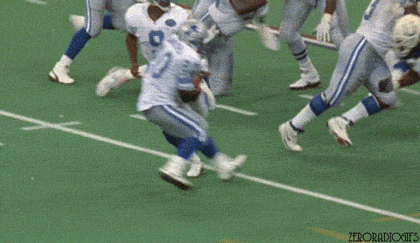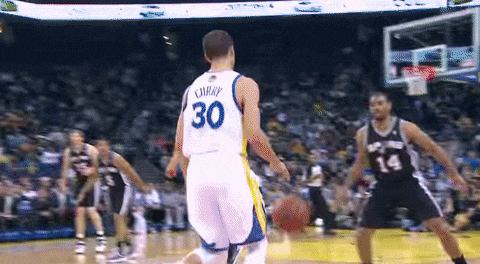How to Get Ultimate Speed Skills
FREE SPEED & POWER WORKOUT!
Download by entering below

Sport Specific Speed: Transient Speed
Talking about speed and being fast brings up a lot of different questions. Many coaches say you have to be fast but don’t define what that even is. For starters, I like to think about chaos coordination and having a high rate of chaos coordination. This means, that if we are going to be recruiting muscle groups, all of our muscles firing together as quickly as possible, will lead to things being done and executed at higher speeds. The expression of strength is differentiated between doing single-leg shots in wrestling or juking as a running back to avoid defenders versus the idea of being fast running on a track.
Running on a track we know that speed is going to be the start, the drive phase, acceleration, and then maximal phases. We know all the phases, but we don’t break that down when we talk about competition speed across various sports. The main difference between track speed and open-skill sport speed is that open-skill sports contain various angles, higher rates of coordination, and semi-autonomous movements, all of which impact speed. This leads us to the concept of transient speed.
Transient speed is every way that involves being fast that doesn’t involve sprinting speed. Think about basketball. Basketball has an implement, the basketball, and the athlete has to cross up a defender. Highlights of any basketball player in the NBA reveal that the players are fast, but there is a difference between the NBA player’s speed and Usain Bolt’s speed. We are calling this differentiation in speed transient speed. Transient speed is a differentiation of speed from the track to the athletic world of open-skill sports. All of these various forms of speed or speed movements or speed exercises that transfer to sports performance lead us to develop transient speed.
Jordan Burroughs hitting a blast double. Steph Curry dribbling the ball between his legs, stepping back, and hitting a three. Barry Sanders back in the day hitting a juke and scrambling for an extra two or three yards. Sam Mattis rotating at extremely high rates and launching the disc. All of these examples are athletes being fast and moving at incredibly high rates. Typically, we just say they are fast, but there isn’t a term to say what type of speed it is. We don’t differentiate between ‘fast’ and actual locomotion. Thus transient speed.

Transient Speed Kills
How does it help?
We know speed kills and, in this sense, transient speed kills. Transient speed is the speed that can cross all athletic boundaries.
Fine and good, but we also have to do deeper and think about how we can develop transient speed. Think of the command-driven action or task of getting into the blocks on the track, hearing the gun, and spriting. Similar to a running back anticipating the snap to take the handoff and run the called play. The command-driven intent is different but similar.

To train the command-driven intent we can use technical coordination movements to improve the ability to apply a large amount of force. We can do the Olympic lifts: snatch, power cleans, clean, power clean. We can even do trap bar jumps. All and any movement that can improve an athlete’s ability to react to the command system of training. Our initial focus needs to be in this realm.
After training the technical coordination movement, we can get into the feed-forward movements. Feed-forward movements will be more reflexive for speed development. Think about central pattern generators and what CPGs mean for performance. Created reflexive exercises to develop CPGs. Reflexive exercises can be developed by breaking down different steps or sequences that are popular in a given sport. For instance, running backs in football tend to have a one-step to four or five-step sequence that leads to a consistent pattern of jukes. Jukes happen at different speeds from all different positions, but typically there are 10 to 15 different patterns (it might be greater than that, but so far in my footage breakdown this is what I found). Basketball is similar. There are consistent patterns that can be trained inside the weight room to lead into a flow state for the athleticism to be expressed in a greater semi-autonomous manner.
We want to train the semi-autonomous movements over and over again to develop the central pattern generators to help athletes execute sporting movements quicker without necessarily having traditional speed.

Using Plyometrics
Plyometrics are excellent strength and conditioning tools for developing transient speed. A good example could involve doing a depth drop into a bound so the athlete has to react at different speeds. Wrestlers who break down wrestling flows or scrambles will notice similar patterns emerge. There are a couple of really key movement patterns that can be broken down that can be practiced over and over and over again in the weight room and on the mat.
Think about it all like electricity. In old homes when the light switch is flipped there is a delay until the lights come on. The switch is turned on and the lights taking their time to illuminate is similar to an athlete who reacts slowly. However, by training reflexive movements, plyometrics, and central pattern generators, we start to see the flip of the switch and the reaction happening much quicker, the lights turning on right away. The noise is minimized and the reaction time happens a lot quicker. It is the same principle we want to see done throughout all different sports.
Abstract Concept
I’ll admit it. Transient speed is an abstract concept. There is nothing out there currently. Differentiating between true speed, and true agility, to applying transient speed and applying it across all the different sporting realms.
The first step to developing transient speed is using technical coordination movement variations that emulate the patterns and positions athletes will be in their sport. For instance, wrestlers and swimmers doing high-butt power snatches. We can even use auditory cues to enhance their command-driven task to train the command aspect of the neural drive.

With slower athletes whose nervous system is not as kinesthetically intelligent, we can train with absolute strength movements and contrast methods to make their nervous system more reactive. We need to make sure to pick exercises and plyometrics that are specific to positions in an athlete’s given sport.
Progressing the athlete through technical coordination movements and contrast methods with absolute strength and plyometric movements, we can continue into the reflexive strength training systems. We want to begin by using chunking methods to break down different positions and technical models in different sports. For instance, we can break down the best 3 to 5 moves of the greatest point guard ever. We can chunk the movements into sequential parts and learn the first two to three steps over some time. By making it more sequential, it is more likely to become semi-autonomous and lead to the feed-forward system. This might be done by training a weighted euro-step.
Finally, we need to be training plyometric series unilaterally and bilaterally at least once a week. The plyometrics can be a mold between force development and specific force development with reflexive exercises. Typically I like to use standard bilateral plyometrics like stair jumps or hurdle hops to prime the nervous system to coordinate as rapidly as possible. But we can also bring in skater jumps or Gwiz jumps or any specific patterning to try and improve sport-specific related skills. All the drills, both bilateral and unilateral, will help an athlete to be able to coordinate at high rates.
Recap
We introduced transient speed. Understand transient speed is the speed that carries over to all realms of athletics that is not specifically sprinting speed on a closed skill track. It is slightly different. We can train things similarly, but it is going to be more specific to the individual sport.
We can train the command-driven action through technical coordination and absolute strength in conjunction with contrast methods. We can use reflexive sequencing and movements to train the CPGs that will be utilized in different angles in each individual’s sport. Ideally, we pair this with different plyometrics. Ultimately, we want to develop a program with technical coordination, absolute strength, and reflexive strength work to enhance transient speed.
Related Posts
Blog Topics

Yo, It's Dane
Welcome to the Garage Strength Blog, where it is my goal to provide you with the experience and knowledge I've gained in the strength and conditioning world over many years of learning from both successes and failures. I train elite-level athletes in a multitude of sports from the high school to professional levels, already producing 5 Olympics and 30+ National Champions. If you want to be the next champion I train, check out my strength programs below!
Start Training With Me

Join for free educational videos EVERY WEEK on strength coaching and athletic performance



